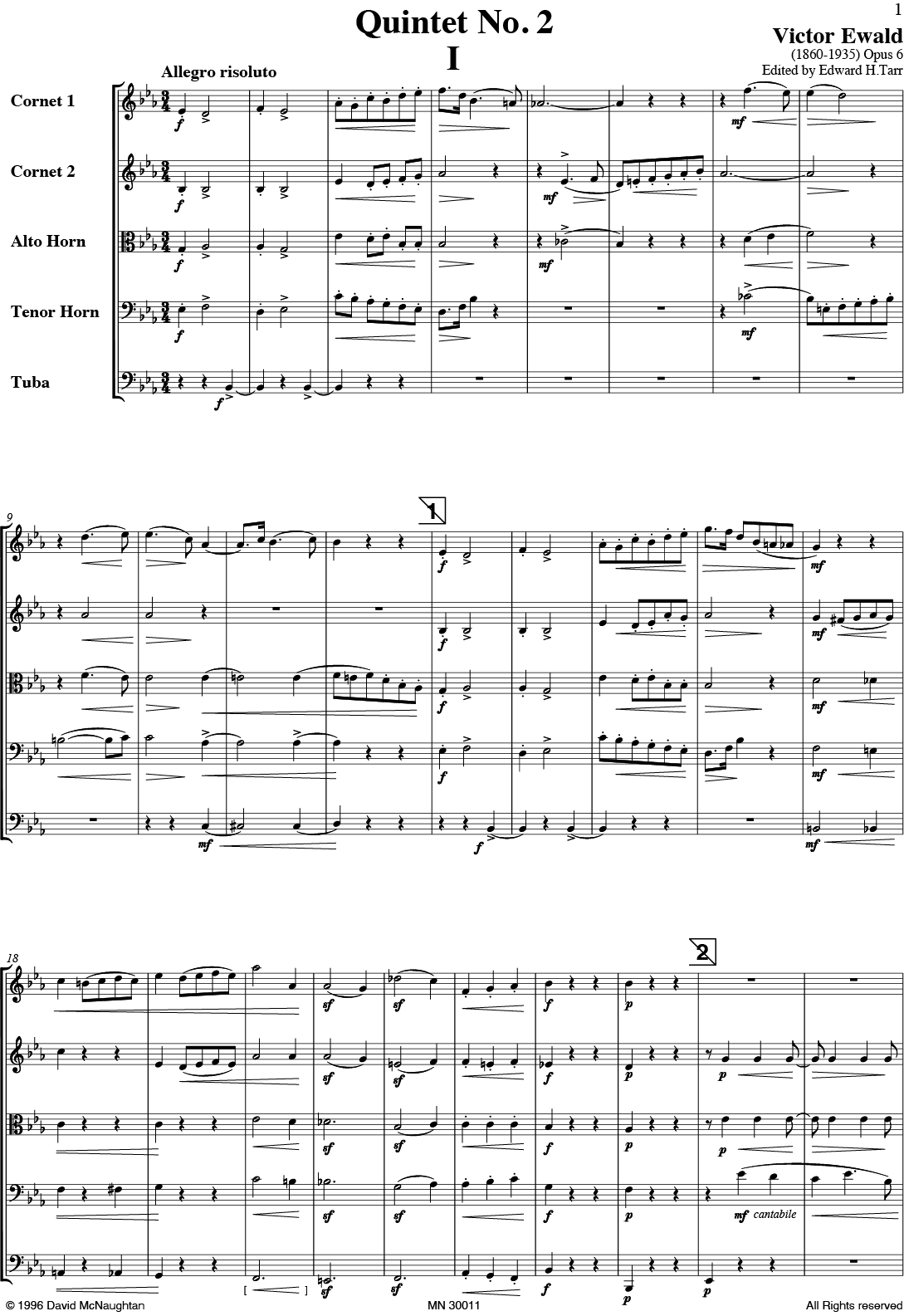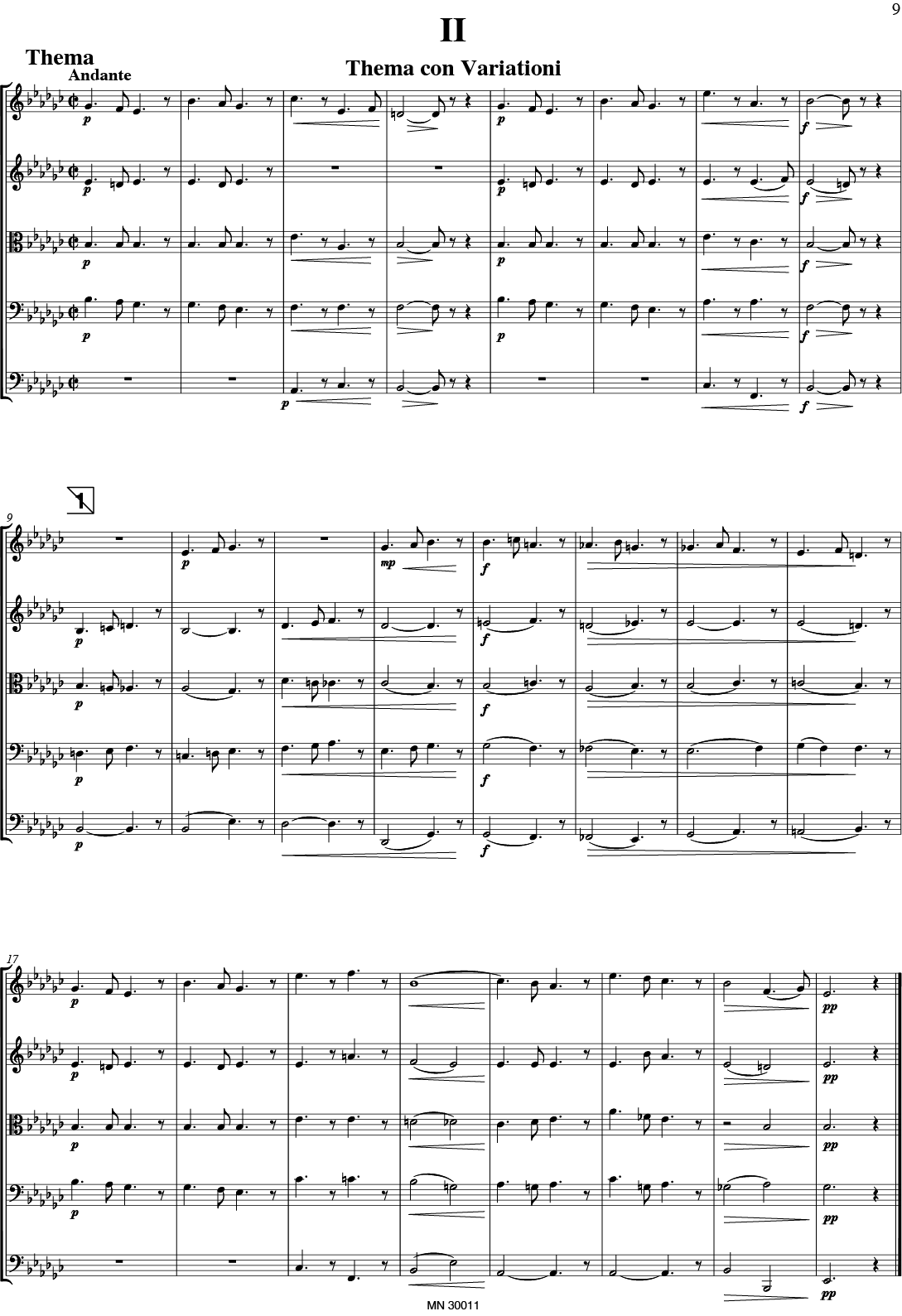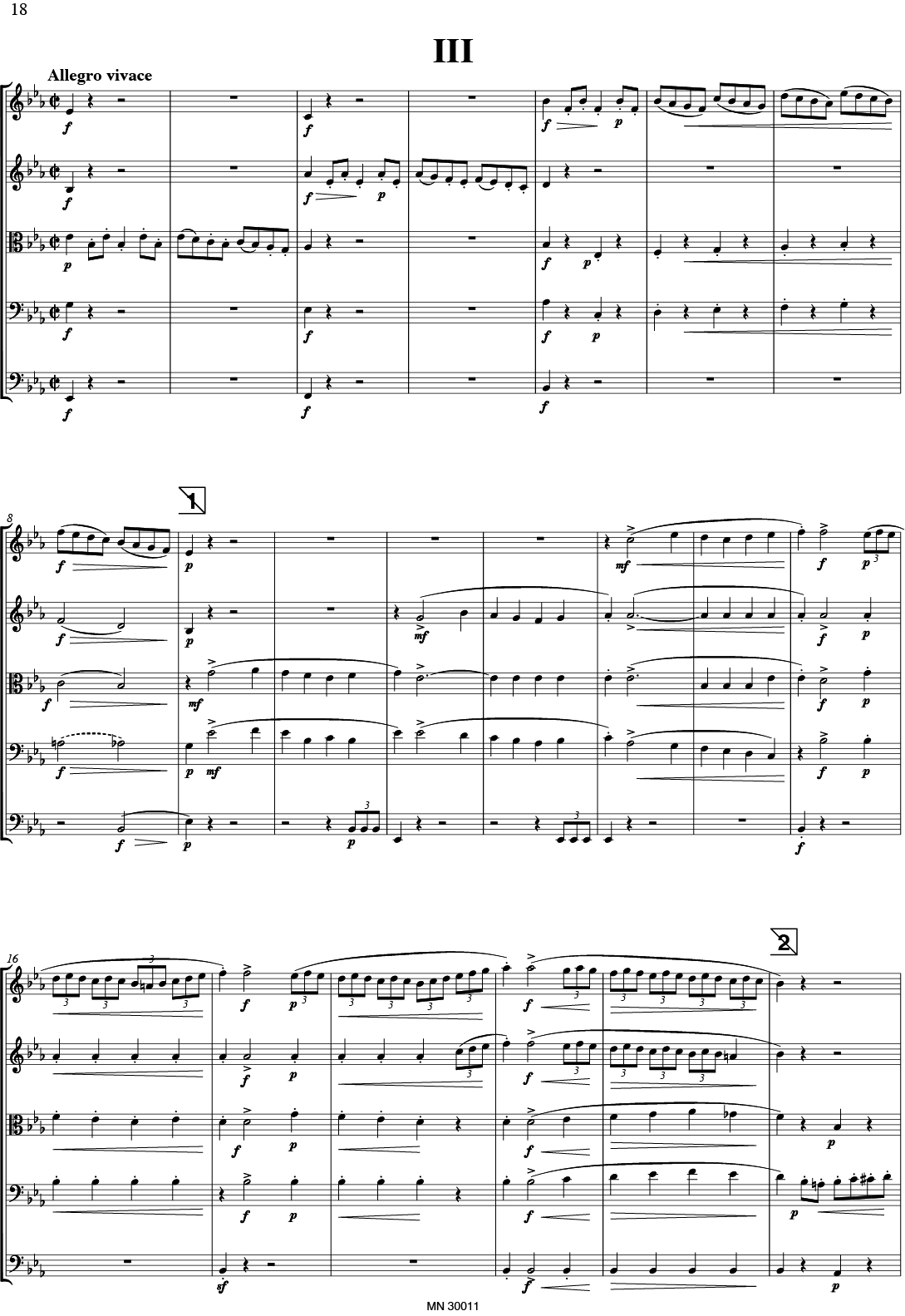
Ewald Brass Quintet No. 2
Instrumentation: 2 Cornets, E flat Alto Horn, B flat Tenor Horn, TubaDifficulty (I-VI): V
Parts for:
Parts I + II: Cornet (Trumpet) in B flat
Part III: Alto Horn in E flat; Horn in F
Part IV: Tenor Horn in B flat; Trombone
Part V: Tuba
Series: Edward Tarr Brass
Editor: Edward H. Tarr
Victor Ewald was born in St. Petersburg on November 27, 1860, and died there (the city now being called Leningrad) on April 16, 1935. He was an engineer by profession; from 1895 to 1915 he was professor at the Institute of Civil Engineering, continuing the practice of his profession after the 1917 revolution as well. He was also interested in Russian folk music, taking part on expeditions to northern Russia to gather folk songs. He was, in addition, a wellknown violoncellist in the salons of the St. Petersburg nobility, notably in the circle of Mitrofan Petrovich Belaiev (1836 - 1904). Belaiev will go down in history as a music publisher for his support of a host of Russian composers, among them not only great ones such as Balakirev, Borodin, Cui, Glazunov, Mussorgsky, Rimsky-Korsakov, Tchaikovsky, and Nicholas Tcherepnin, but also others such as Ewald. Belaiev also subsidised a series of 14 annual concerts of Russian music in St. Petersburg.
More important for Victor Ewald were the Friday evening string quartet sessions held in Belaiev's house, the publisher himself playing the viola, Ewald the cello. Its allencompassing repertoire included all the quartets of Haydn, Mozart, and Beethoven, as well as newer works. The sessions started before dinner and always continued until well into the night, never ending before 3 in the morning. According to the testimony of Rimsky-Korsakov, himself a frequent visitor, the Friday evening sessions had started some time before 1883, with the number of visitors increasing during the winter of 1883-1884. Among these were Borodin, Glazunov, Sokolov, and others. Sokolov, a teacher at the St. Petersburg Conservatory, was one of Ewald's composition teachers. In addition, we can infer that Ewald must have received much of his undisputed craftsmanship and sense of form from the training, formal or informal, in the Belaiev circle.
His first known work is a string quartet, Opus 1, which was awarded a third prize in a competition of the St. Petersburg Quartet Society in March, 1893. (The judges were Tchaikovsky, Laroche, and Rimsky-Korsakov, the prize money came from Belaiev.) It was published by Belaiev in 1894. Several other works followed, a Romance, Opus 2, and Deux morceaux, Opus 3, for cello and piano (1894), and a string quintet, Opus 4 (1895). In that year, which was also the year in which he was appointed professor, he apparently ceased composing for a time. Rimsky-Korsakov also reports that by then, the Friday evening quartet sessions had begun to suffer a certain stagnation. In 1899 he did write one piece, the eighth variation (Andante cantabile) of a collective work, Variations sur une theme populaire russe for string quartet, one of the other composers being Scriabin. His next published work, the Brass Quintet No. 1 in B flat Minor, Opus 5, was printed in 1912. It was the only one of his three brass quintets to be published during his lifetime. Ewald's Brass Quintets No. 2 in E flat Major, Opus 6, and No. 3 in D flat Major, Op. 7, remained in manuscript and only came to light in the mid-1970s. The original instrumentation of Ewald's three brass quintets is: 2 cornets in B flat, alto horn in E flat, tenor horn in B flat, and tuba. In the present edition, the score is written in concert pitch, and there are several alternatives in the set of parts, to facilitate performance either on the original instruments, the instruments of the modem brass quintet, or whatever.



